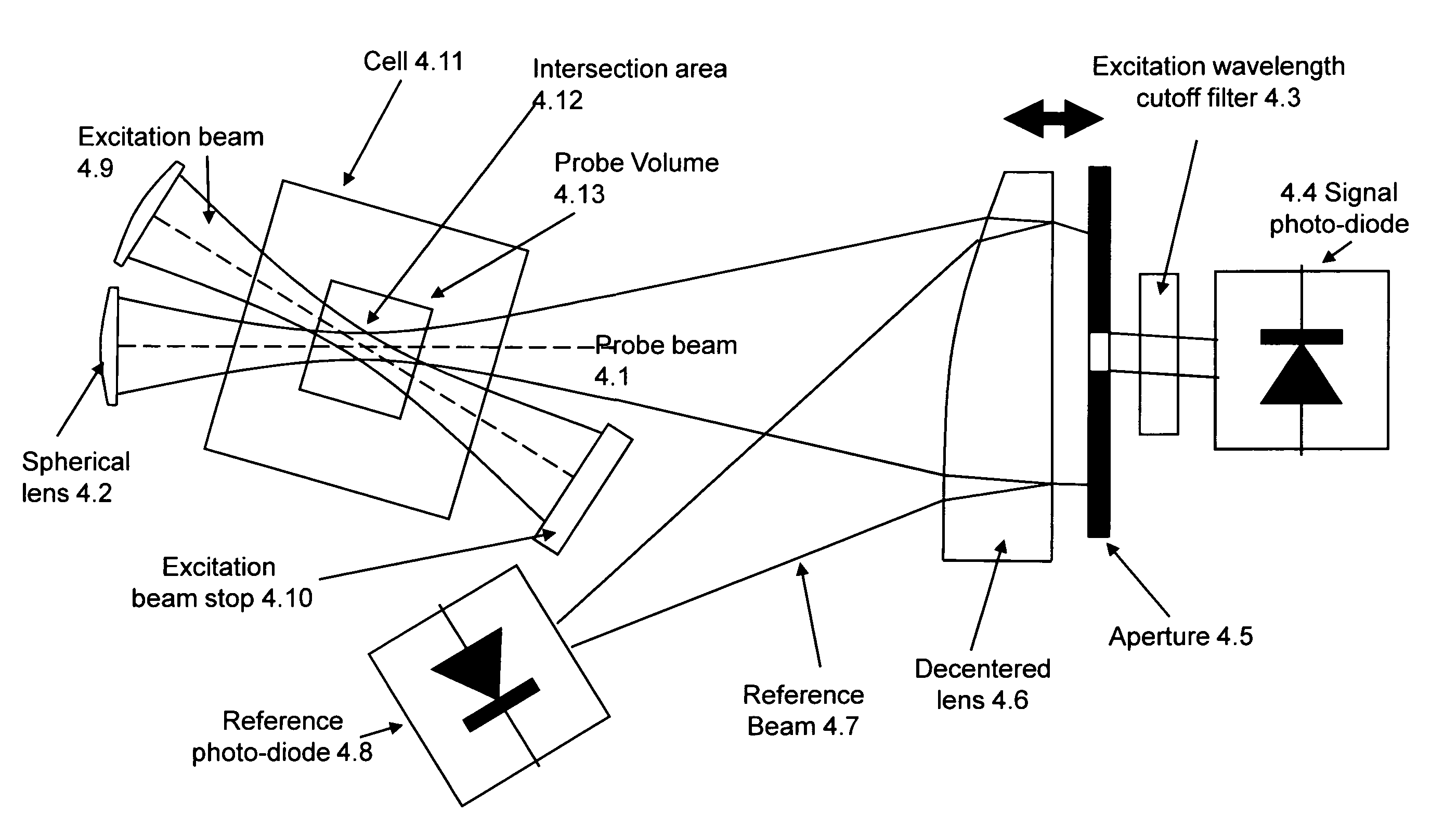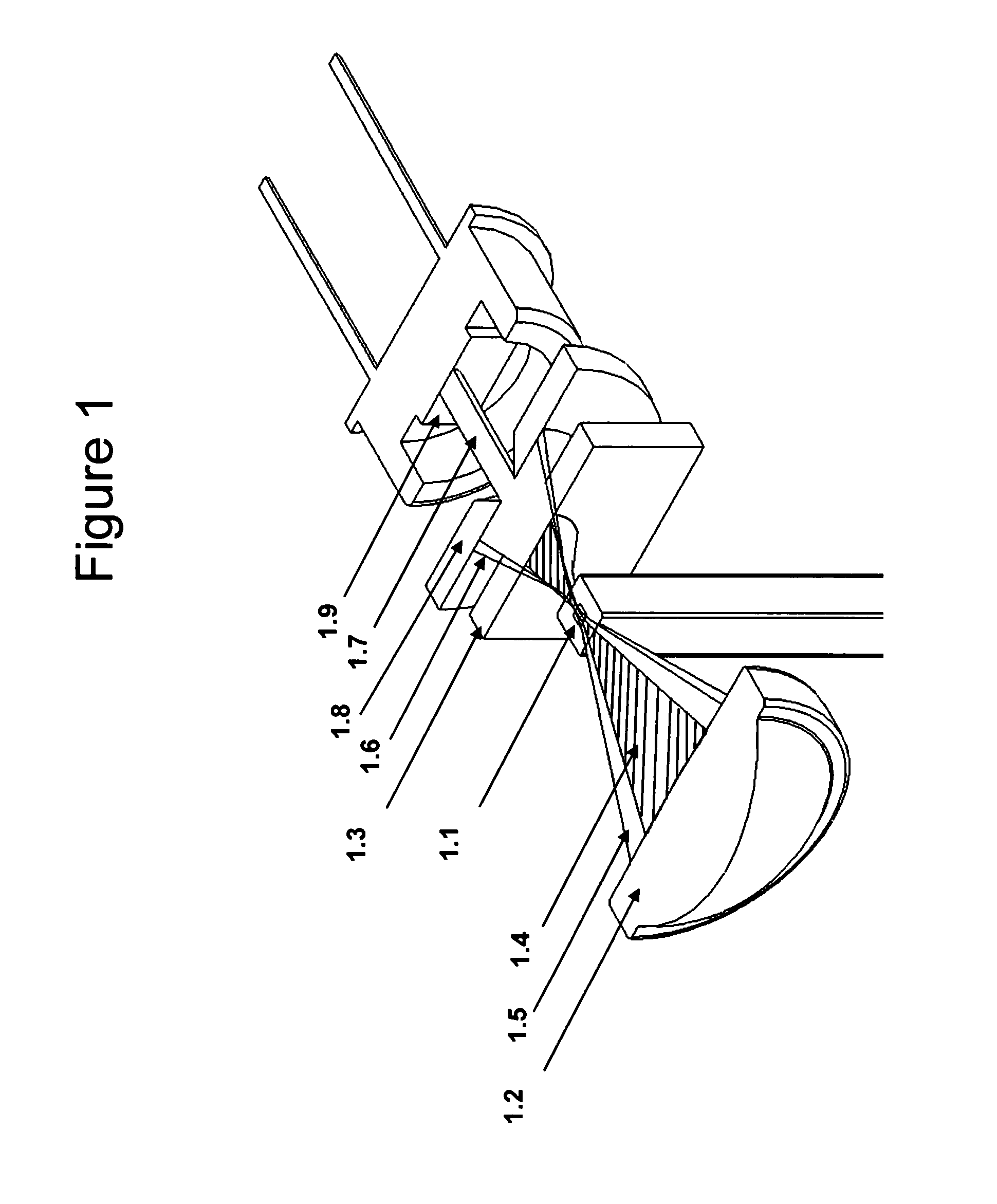Thermal lens spectroscopy for ultra-sensitive absorption measurement
a technology of absorption measurement and thermal lens, which is applied in the field of thermal lens spectroscopy, can solve the problems that the spectrophotometric absorption spectroscopy of ultra-violet-visible (“uv-vis”) cannot provide sufficient sensitivity, and the limited number of analyte species have sufficient fluorescence efficiency
- Summary
- Abstract
- Description
- Claims
- Application Information
AI Technical Summary
Problems solved by technology
Method used
Image
Examples
Embodiment Construction
[0013]Although the basic principle of TLS were reported by M. Tokeshi, M. Uchida, A. Hibara, T. Sawada and T. Kitamori in “Determination of Submicromole Amounts of Nonfluorescent Molecules Using a Thermal Lens Microscope: Subsingle-Molecule Determination” Anal. Chem. 73, 2112-2116 (2001), this prior art reference provides neither an apparatus nor method possessing the advantages of the present invention which, depending on the particular embodiment selected, include:[0014]The relative noise in one embodiment of the current invention closely approaches the shot noise limit for the probe beam, which results in a signal to noise ratio of 5×10−8 for a probe beam power of only 0.25 mW This relative noise improvement is achieved by removing the excess noise components from the probe beam by using a second photodetector.[0015]In the current invention the unwanted effect of the cell window or capillary wall absorption is reduced by approximately a factor of 10 due to optimized off-axis beam...
PUM
| Property | Measurement | Unit |
|---|---|---|
| angle | aaaaa | aaaaa |
| wavelength | aaaaa | aaaaa |
| average power | aaaaa | aaaaa |
Abstract
Description
Claims
Application Information
 Login to View More
Login to View More - R&D
- Intellectual Property
- Life Sciences
- Materials
- Tech Scout
- Unparalleled Data Quality
- Higher Quality Content
- 60% Fewer Hallucinations
Browse by: Latest US Patents, China's latest patents, Technical Efficacy Thesaurus, Application Domain, Technology Topic, Popular Technical Reports.
© 2025 PatSnap. All rights reserved.Legal|Privacy policy|Modern Slavery Act Transparency Statement|Sitemap|About US| Contact US: help@patsnap.com



